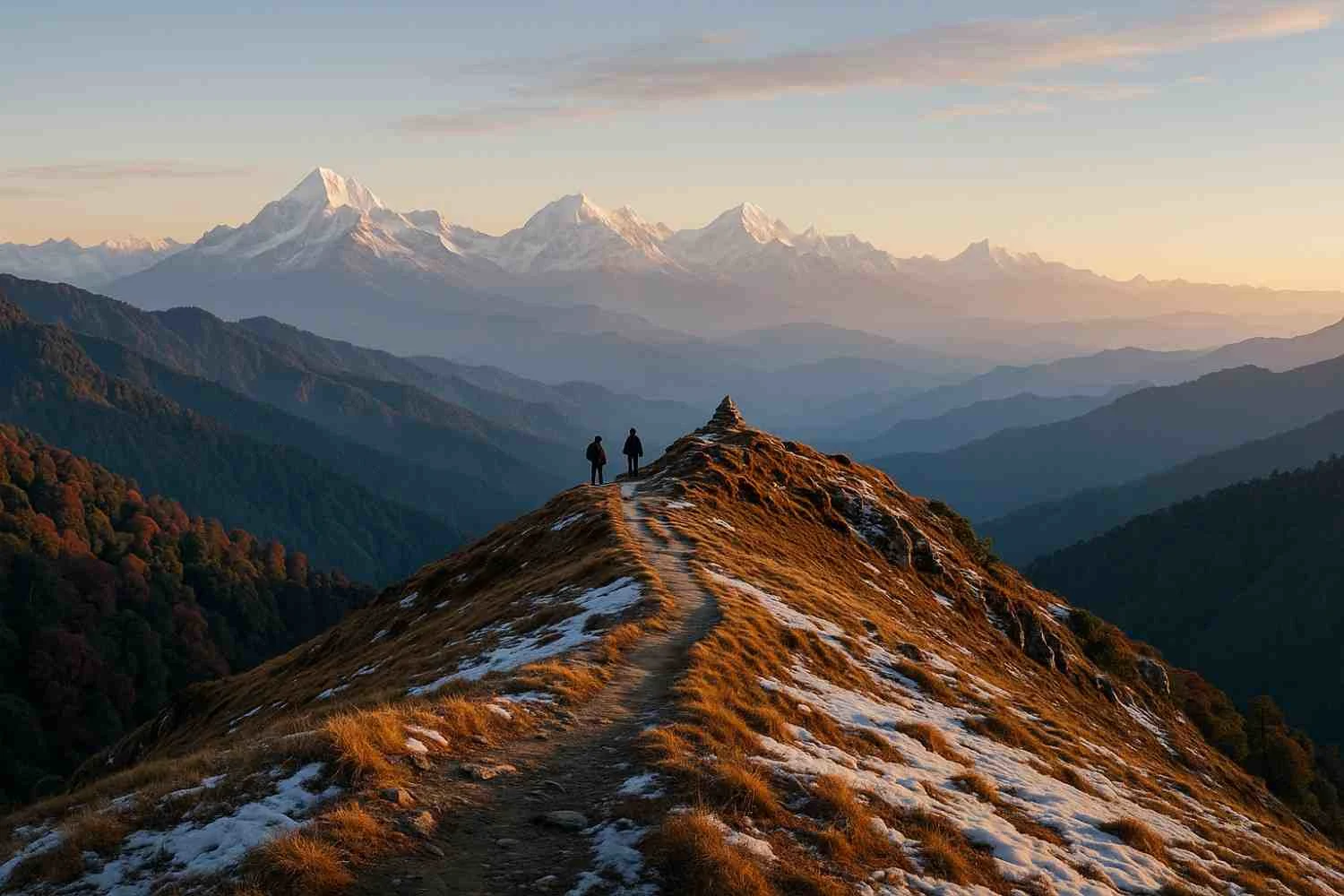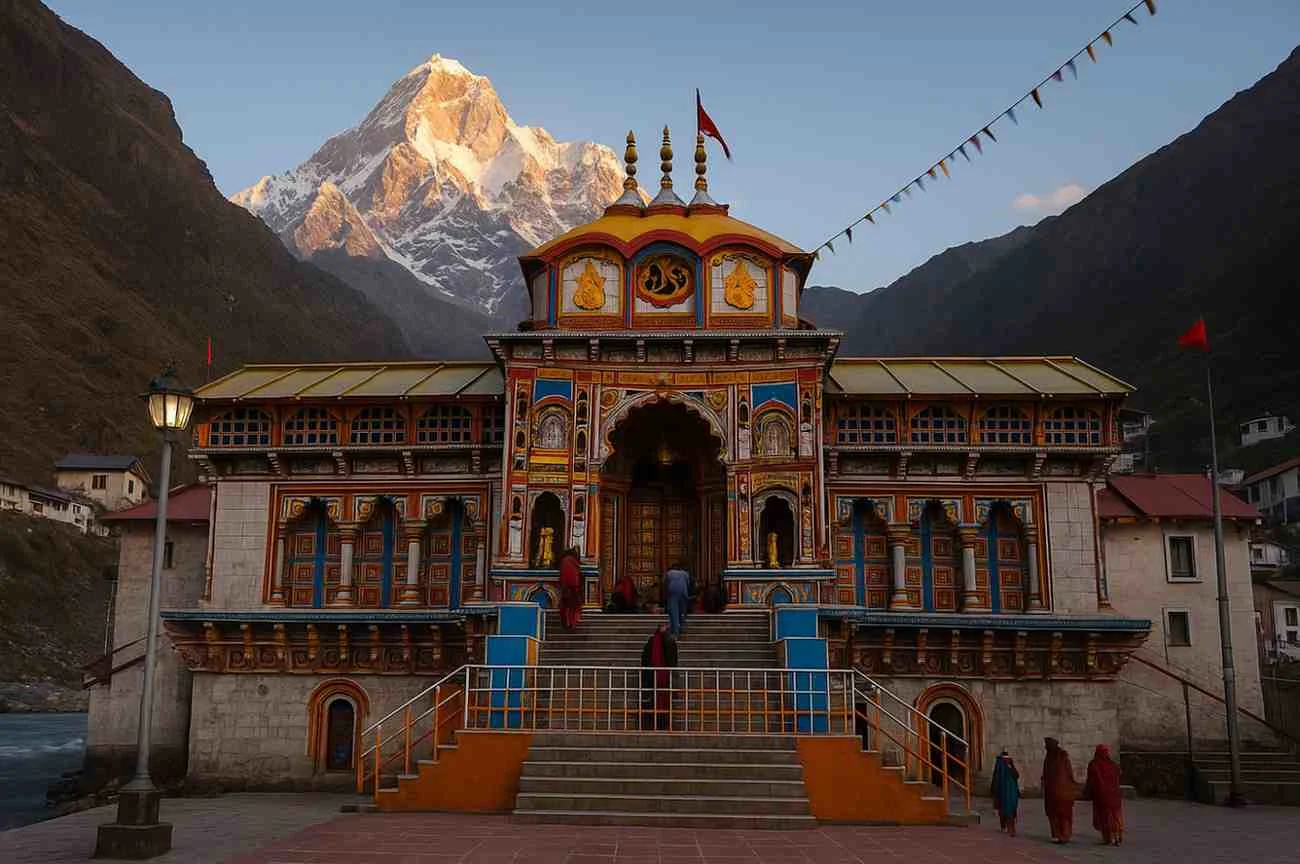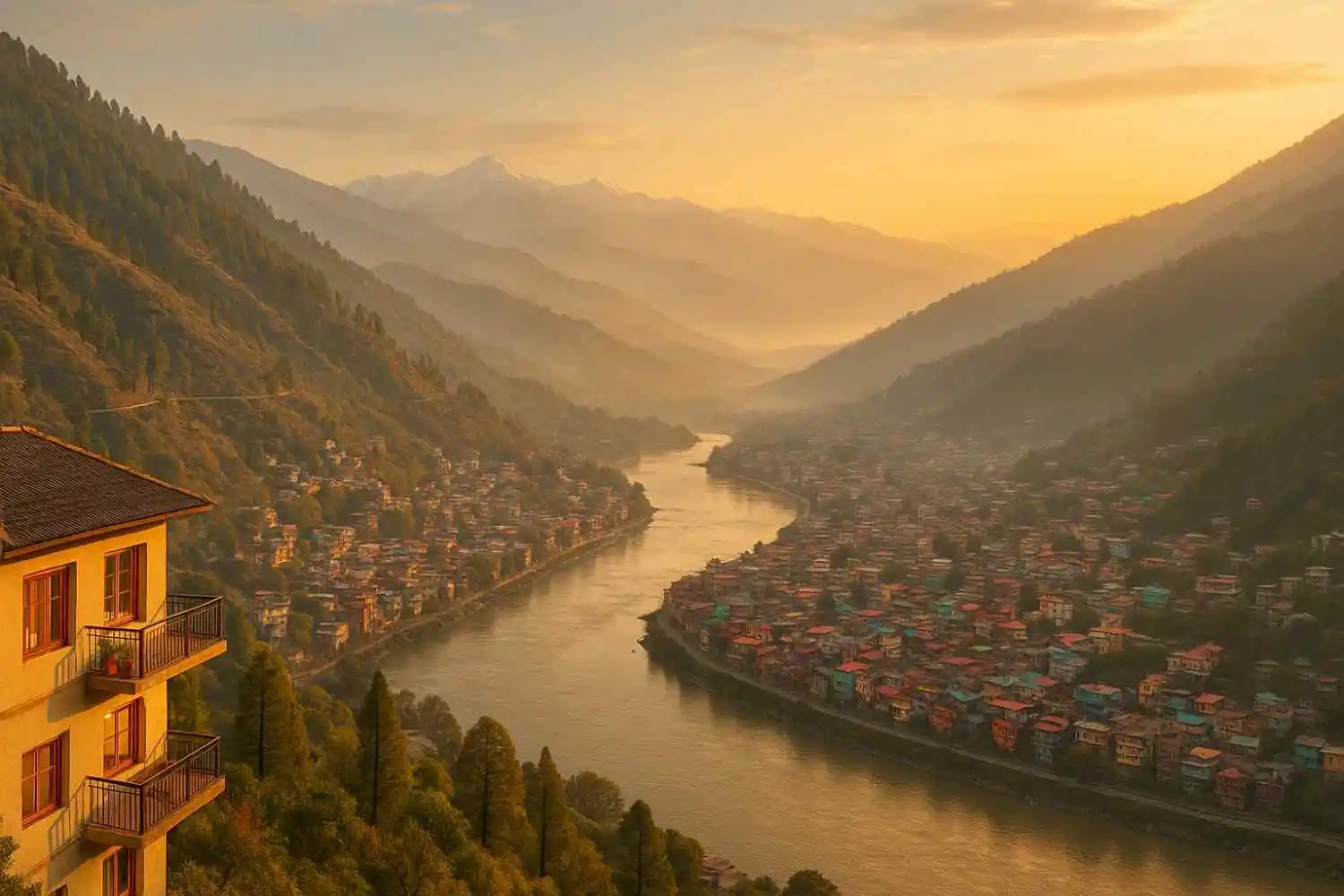Andretta Artist Village is a serene, art-forward hamlet in the Kangra Valley where pottery wheels hum, studios glow with creative energy, and mountain air inspires painters, sculptors, and theatre lovers. It’s best known for Andretta Pottery, its association with Norah Richards—the Irish theatre pioneer who catalyzed the community—and a continuing tradition of artist-led learning.
Andretta Artist Village, located near Palampur in the Kangra Valley of Himachal Pradesh, is a creative hub celebrated for pottery, art, and cultural heritage. Framed by tea gardens and views of the Dhauladhar, it offers hands-on workshops, intimate galleries, and a living legacy of rural theatre.
What is Andretta Artist Village?
Andretta Artist Village is a small, culture-centric settlement in Kangra District, Himachal Pradesh, India, roughly 13 km from Palampur. The village evolved into a recognized artist colony in the early 20th century when Norah Richards, an Irish theatre personality and educator, chose the area for her rural theatre experiments and community projects. Over time, Andretta drew potters, painters, sculptors, ceramicists, and theatre practitioners, transforming it into a creative community where visitors can watch artisans at work, learn pottery, browse studios, and experience a gentle, slow-travel slice of Himalayan life.
Andretta Artist Village – Historical Background & Origin
1. When and why it was established
Andretta’s modern identity as an art colony was seeded in the early 1900s. Drawn by the valley’s quiet charm and potential for rural cultural renewal, Norah Richards settled here and began to champion rural theatre, encouraging students and locals to stage plays rooted in village life. Her initiatives anchored Andretta as a heritage site of theatre and a creative community long before such terms became fashionable.
2. Norah Richards’ contribution
Often called the “First Lady of Punjabi Theatre,” Norah nurtured a practice where performance, writing, and rural realities intersected. Her home (and later memorials to her) remains an evocative stop in Andretta, illustrating how art can shape a place’s identity. In time, her circle and other like-minded creatives made Andretta an open invitation to artists seeking both solitude and dialogue.
3. Evolution as an art hub
By mid to late 20th century, new waves of artists—painters, sculptors, and potters—arrived. Studios sprouted, Andretta Pottery & Craft Society took root, and workshops introduced travelers to the meditative rhythm of clay. The village gained recognition as Himachal Pradesh’s artist village, balancing preservation of its theatre roots with experimentation in ceramics and visual arts.
Why Andretta Artist Village is Famous
- Home to Andretta Pottery & Craft Society – renowned for studio pottery and hands-on classes.
- Legacy of Norah Richards – an anchor of rural theatre history and community arts.
- Hub for painters, sculptors, and ceramic artists – studios, residencies, and informal mentorship.
- Scenic Dhauladhar backdrop – art with a Himalayan horizon; tea gardens and quiet lanes.
- Slow-travel ethos – intimate, artist-led experiences over checklist tourism.
- Cultural continuity – from theatre to clay, the village sustains living traditions.
Things to Do in Andretta Artist Village
1. Visit Andretta Pottery & Craft Society
If there’s one quintessential Andretta experience, it’s this. The Andretta Pottery studio welcomes visitors to observe potters at work and, at certain times, join pottery-making workshops. Learn the basics—wedging, centering, pulling, trimming—or simply shop for handmade stoneware like cups, bowls, planters, and serveware. The glazes often reflect earthy tones and mountain moods, making each piece an authentic keepsake.
2. Explore Norah Richards’ House & Legacy
A visit to Norah Richards’ home (often referred to locally as “Norah’s house”) adds historical depth to your trip. You’ll get a sense of how the theatre pioneer lived and why she chose Andretta to nurture rural arts. The site, rustic yet evocative, frames the story of how one visionary helped seed an entire artist village.
3. Meet Local Artists & Browse Studios
Andretta’s charm lies in artist interactions—you might find a painter experimenting with Himalayan light, a sculptor shaping wood or stone, or a ceramicist exploring new forms. Studios vary in size and style, but conversations with artists often lead to meaningful insights about technique, process, and life in a creative commune.
4. Café Hopping & Art-Themed Homestays
You’ll find cozy cafés offering simple, wholesome fare—think Himalayan teas, organic salads, and comfort meals. Several homestays and small guesthouses echo the village’s art-forward personality: murals, handmade ceramics at breakfast, sketchbooks by the window. Staying in the village (rather than just day-tripping) unlocks the slow rhythms that Andretta is known for.
5. Walks, Photography & Tea-Garden Rambles
Between studios, wander into tea gardens, village lanes, and trails where birdsong competes with your camera shutter. Photography is delightful in the soft morning and late-afternoon light when the Dhauladhar peaks show off their contours and the greens of the valley feel extra saturated.
6. Attend a Workshop, Residency or Pop-up Event
From short pottery classes to artist residencies (periodically announced by studios), Andretta’s calendar gently ebbs and flows. Plan ahead if you want a longer learning experience, or ask around when you arrive—serendipity is a friend here.
How to Reach Andretta
- Nearest Airport: Kangra (Gaggal) – ~40 km from Andretta. Taxis are readily available from the airport to Palampur/Andretta.
- By Train: Pathankot – ~120 km (major railhead). From Pathankot, continue by road (taxi/bus) via Nurpur–Yol–Palampur.
- By Road: Andretta sits about 13 km from Palampur on the NH-503 corridor, with a local turn-off to the village.
- Best Route (from Palampur): Palampur → Sidhbari → Andretta (local signage and community markers guide the final approach).
Best Time to Visit Andretta
| Season | Details |
| March–June | Pleasant weather for studio visits, outdoor walks, and workshops. |
| July–Aug | Lush monsoon greens; expect intermittent rain—great for indoor pottery time |
| Sep–Nov | Crisp views, mellow light—ideal for photography and art events. |
| Dec–Feb | Quiet, wintry charm; carry warm layers if you enjoy off-season calm. |
Where to Stay – Andretta Artist Village
- The Mirage Andretta – A thoughtfully curated stay known for its artsy vibe and village setting.
- Norwood Green, Palampur – A premium stay option about 30–40 minutes away, close to tea estates.
- Local Artist Homestays – Small, warm hosting with an artist-in-residence feel; perfect for longer creative sojourns.
Andretta Artist Village – Nearby Attractions
- Palampur Tea Gardens – Palampur Tea Gardens ~13 km; stroll amid rolling emerald plantations.
- Bir Billing (Paragliding) – Bir Billing ~30 km; India’s paragliding hotspot with cafes and sunset points.
- Baijnath Temple – Baijnath Temple ~20 km; ancient stone temple with exquisite architecture.
- Sobha Singh Art Gallery – nearby Andretta; a must-visit for exploring the legacy of the celebrated painter.
Andretta Artist Village Visitor Tips
- Carry cash – Small studios and cafés may prefer cash; ATMs are limited.
- Ask before photographing – Always seek permission when capturing artists at work or inside studios.
- Book workshops early – Pottery classes can fill up, especially on weekends or during holidays.
- Stay overnight – A relaxed 24–48 hours in the village reveals its true personality.
- Respect the pace – Andretta is a living community, not a theme park; keep noise low and time flexible.
- Buy local – Ceramics, prints, and small artworks directly support the artists who keep the village vibrant.
Why Andretta Belongs on Your Himachal Itinerary
Andretta is not a “see-and-go” attraction; it’s a feel-and-stay experience. You’ll find a rare blend of hands-on learning, artist encounters, and Himalayan calm—without crowds or overplanning. Whether you’re a maker, a collector, or a curious traveler, the village offers authentic culture without losing its small-scale soul.
Conclusion
Andretta Artist Village is a creative escape where art, culture, and nature talk to each other. From Andretta Pottery to Norah Richards’ theatre legacy, it invites you to slow down, learn, and connect—with clay, with stories, and with yourself.
FAQ – Andretta Artist Village
Where is Tashi Jong Monastery located?
In Tashi Jong village, near Palampur, Kangra District, Himachal Pradesh, India.
How far is Tashi Jong Monastery from Palampur and Dharamshala?
About 15 km from Palampur; roughly 60–65 km from Dharamshala (road-dependent).
What is the altitude of Tashi Jong Monastery?
Approximately 1,250–1,350 m above sea level (similar to Palampur’s elevation).
How can I reach Tashi Jong Monastery by road or train?
Road: Via NH-503 through Palampur/Baijnath; local turn-off to Tashi Jong.Train: Nearest major railhead is Pathankot (~120 km), then road transfer.
Is Tashi Jong Monastery open to visitors throughout the year?
Yes, year-round, subject to weather and monastery schedules.
What is the best way to reach Tashi Jong from Palampur?
Taxi is quickest; local buses also ply but are slower with more stops.
Does Tashi Jong Monastery charge any entry fee?
No, entry is generally free.
What are the visiting hours of Tashi Jong Monastery?
Typically 8 AM – 6 PM (confirm on arrival; prayer times may limit access to certain halls).
When was Tashi Jong Monastery established?
In the late 20th century.
Who founded Tashi Jong Monastery?
The Eighth Khamtrul Rinpoche is credited with its founding and guidance.
What is the historical significance of Tashi Jong Monastery?
It’s a key exile-era seat preserving Drukpa Kagyu teachings, arts, and community life.
Which Buddhist lineage or sect does Tashi Jong Monastery belong to?
Drukpa Kagyu (Kagyu tradition of Tibetan Buddhism).
What does the name “Tashi Jong” mean?
In Tibetan, “Tashi” implies auspicious, and “Jong” means fort/valley/seat—often read as “Auspicious Valley/Seat.”
What role does Tashi Jong play in Tibetan Buddhism?
It serves as a teaching, practice, and cultural center for the Drukpa Kagyu lineage.
Is Tashi Jong Monastery associated with Khamtrul Rinpoche?
Yes, it is a principal seat of the Khamtrul Rinpoche lineage
What is the architectural style of Tashi Jong Monastery?
Traditional Tibetan monastery style—tiered roofs, vivid colors, dharma symbols.
What makes the design of Tashi Jong Monastery unique?
Its harmonious setting with the Dhauladhar, intricate murals, and stupas accenting landscaped courtyards.
What can visitors see inside the monastery complex?
Prayer halls, murals, statues, chortens, prayer wheels, and quiet gardens.
Are there monks living at Tashi Jong Monastery?
Yes, it’s an active monastic community.
Does Tashi Jong have a prayer hall or meditation area open to tourists?
The main prayer hall is generally accessible to respectful visitors during open hours.
Are photography and videography allowed inside the monastery?
Outside—usually fine. Inside halls—ask permission; no flash and no disturbance.
What are the main festivals celebrated at Tashi Jong Monastery?
Losar (Tibetan New Year) and select Cham (masked dance) days, among other auspicious dates.
What cultural or religious events are held annually?
Ritual prayer ceremonies, teachings, and masked dances tied to the Tibetan lunar calendar.
What are the top things to do at Tashi Jong Monastery?
Observe prayers, explore the Khampagar complex, shop for crafts, and enjoy mountain vistas
How much time is needed to explore Tashi Jong Monastery?
1–2 hours comfortably; longer if you linger for prayers or photography.
Are guided tours available for visitors?
Formal tours are limited; ask on site—sometimes a monk or staff member may offer brief guidance.
Is there any dress code for entering the monastery?
Modest clothing covering shoulders and knees is recommended.
Are there restaurants or cafes near Tashi Jong Monastery?
Small local eateries/tea stalls may be nearby; broader options in Palampur.
What are the accommodation options near Tashi Jong?
Guesthouses and hotels in Palampur and Baijnath suit various budgets.
Is the monastery suitable for family visits?
Yes—peaceful and educational for families with respectful children.
Are toilets and basic facilities available for tourists?
Basic facilities are typically available; carry essentials and cash.
Which places can I visit near Tashi Jong Monastery?
Andretta, Baijnath Temple, Palampur Tea Gardens, Bir Billing.
How far is Tashi Jong from Andretta Artist Village?
Around 10 km.
Can I visit Baijnath Temple and Tashi Jong on the same day?
Yes—20 km apart, commonly combined.
Are there trekking routes or scenic spots near Tashi Jong?
The Kangra Valley offers gentle village walks, tea-garden strolls, and ridge viewpoints.
Is Tashi Jong close to Palampur Tea Gardens?
Yes—about 12 km.
How far is Bir Billing from Tashi Jong Monastery?
Roughly 35 km by road.
What is the best time to visit Tashi Jong Monastery?
March–June and Sep–Nov for clear views and festivals.
How is the weather in Tashi Jong throughout the year?
Pleasant spring, monsoon rains in July–Aug, clear autumn, chilly winters.
Is winter a good season to visit Tashi Jong?
Yes, if you enjoy quiet and crisp air; carry warm clothing.
When are the major festivals or prayer ceremonies held?
Around Losar and specific lunar dates; check locally for exact schedules.
What meditation or spiritual programs are offered at Tashi Jong?
Primarily monastic programs; short public teachings may occur—ask on arrival.
Can tourists participate in Buddhist prayers or rituals?
You may observe quietly; participation is limited and subject to monastery guidance.
Is there a monastery guesthouse for visitors?
Accommodation is generally external; inquire locally if any limited stays are allowed during events.
Are there any souvenir or handicraft shops inside Tashi Jong?
Yes—small craft shops often sell incense, prayer flags, art prints, and handmade items.
What rules should visitors follow at the monastery?
Silence, modest dress, no shoes in halls, no disruptive photos, and respect prayer times.
What is the daily routine of monks at Tashi Jong Monastery?
Morning/evening prayers, study, ritual practice, community chores, and personal meditation.
Is Tashi Jong Monastery eco-friendly or sustainable?
Practices tend to be low-impact, with traditional materials and careful resource use typical of monastic life.
Why is Tashi Jong Monastery famous among tourists and pilgrims?
For its serenity, authentic Tibetan culture, and Dhauladhar backdrop—a rare, unhurried atmosphere.
What is the distance between Tashi Jong and Kangra Airport?
Approximately 40 km.
How safe is Tashi Jong Monastery for solo travelers?
Generally safe; standard rural travel precautions apply.
What is the nearest bus stop or railway station to Tashi Jong?
Local buses connect via nearby villages/Palampur; major rail is Pathankot.
Can foreigners visit and stay near Tashi Jong Monastery?
Yes—foreigners can visit; stays are best arranged in Palampur/Baijnath.
What makes Tashi Jong Monastery a must-visit place in Himachal Pradesh?
Its living spiritual heritage, Tibetan artistry, and mountain calm—all within easy reach of Palampur.






